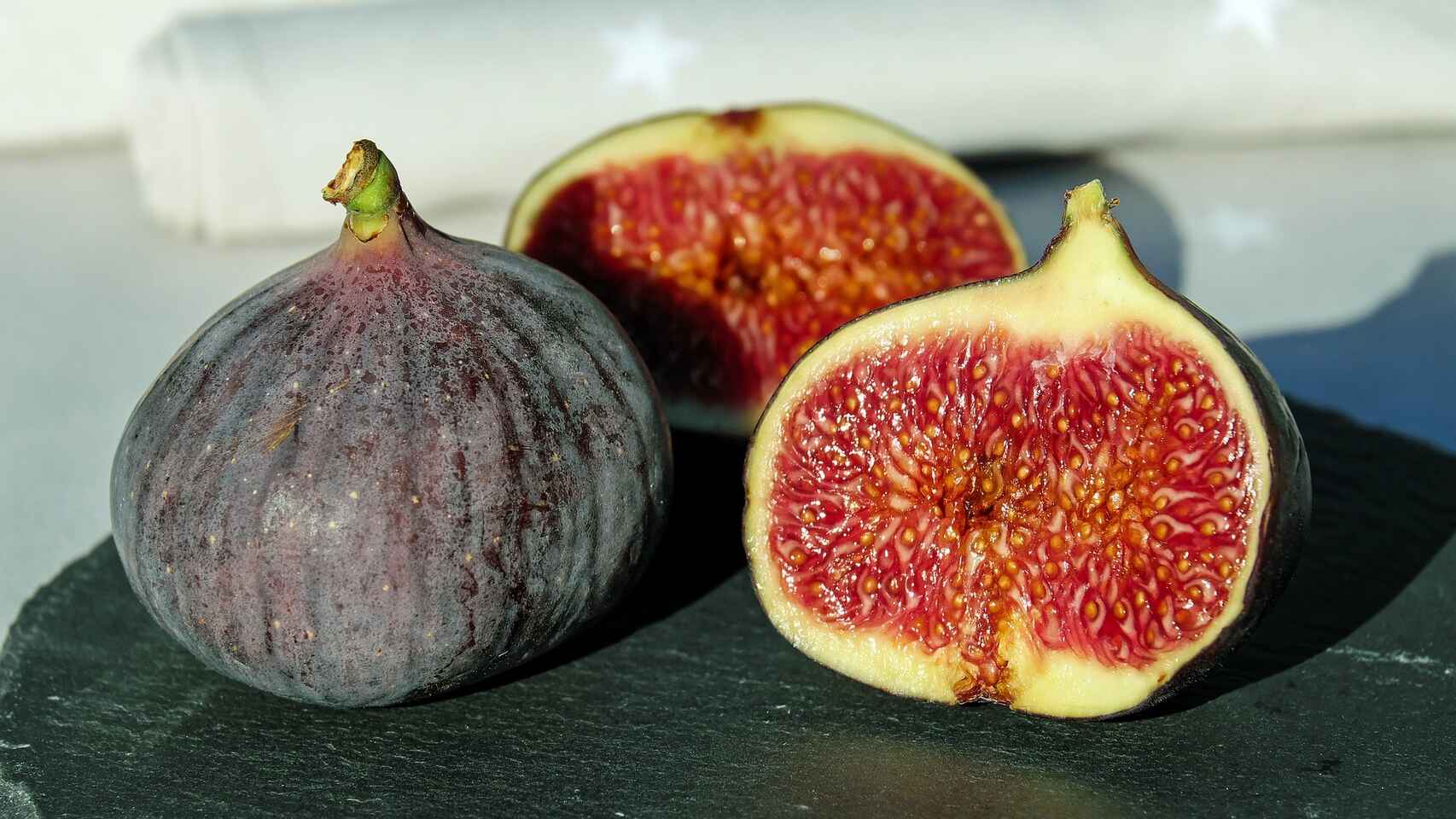The fig provides benefits for digestive and cardiovascular health, but also helps you lose weight, prevents diseases and takes care of the muscles and skin.
The fig is a fruit that is as tasty as it is healthy. A pump of nutrients beneficial for our cardiovascular and digestive health that still hides many more properties. It is the fruit of the fig tree, the Ficus carica, of the Moraceae family. However, technically it is not a fruit but an infrutescence, a set of inverted flowers that explode inside the black pod. It is believed that it comes from the Near East and there is evidence that humans collected them in 9,000 BC; However, it quickly spread throughout the Mediterranean and became very popular in Greece, where it was nicknamed the philosophers’ fruit. It is also grown in Spain, mainly in Huesca, Ávila, Cáceres, Murcia, Alicante and Lleida.
The fig is a sweet and very nutritious food that we might think is high in calories, but its caloric intake is not high, nor is its percentage of fat and protein. This, added to the fact that it is one of the fruits with more fiber and, therefore, generates a feeling of satiety, makes it a perfect ally of weight loss diets. Its fibrous content also makes it useful to solve digestive problems such as constipation and serve as a probiotic. In addition, according to a study by the University of Isfahan (Iran), this fruit reduces the symptoms of irritable bowel syndrome. Likewise, its soluble fibers contribute to regulating cholesterol and glucose levels in the blood, promoting an improvement in cardiovascular health.
Figs
Figs Pixabay
SUPERFOOD NUTRITION
Fig: all the properties and benefits of the ‘fruit of the philosophers’
The fig provides benefits for digestive and cardiovascular health, but also helps you lose weight, prevents diseases and takes care of the muscles and skin.
3 April, 2021 00:40
FRUIT FIBER SUPERFOOD FRUITS
Marta Corral @MartinhaCorral
Related news
Coconut: all the properties and benefits of the tropical fruit rich in fat that does not make you fat
Chaga: all the benefits and properties of the ‘forest diamond’
Sardine: benefits and properties of the fish that best cares for the heart
The fig is a fruit that is as tasty as it is healthy. A pump of nutrients beneficial for our cardiovascular and digestive health that still hides many more properties. It is the fruit of the fig tree, the Ficus carica, of the Moraceae family. However, technically it is not a fruit but an infrutescence, a set of inverted flowers that explode inside the black pod. It is believed that it comes from the Near East and there is evidence that humans collected them in 9,000 BC; However, it quickly spread throughout the Mediterranean and became very popular in Greece, where it was nicknamed the philosophers’ fruit. It is also grown in Spain, mainly in Huesca, Ávila, Cáceres, Murcia, Alicante and Lleida.
The fig is a sweet and very nutritious food that we might think is high in calories, but its caloric intake is not high, nor is its percentage of fat and protein. This, added to the fact that it is one of the fruits with more fiber and, therefore, generates a feeling of satiety, makes it a perfect ally of weight loss diets. Its fibrous content also makes it useful to solve digestive problems such as constipation and serve as a probiotic. In addition, according to a study by the University of Isfahan (Iran), this fruit reduces the symptoms of irritable bowel syndrome. Likewise, its soluble fibers contribute to regulating cholesterol and glucose levels in the blood, promoting an improvement in cardiovascular health.
The Spanish Nutrition Foundation (FEN) highlights a high contribution of potassium and vitamin B6 in fig. The former is a mineral that helps nerve function, muscle contraction, and maintains a steady heart rate, while the latter produces antibodies to fight disease, maintains normal neurological function, and manufactures hemoglobin. Introducing them in the diet will also provide benefits to maintain a balanced and youthful skin due to its antioxidant effect. It also prevents macular degeneration that affects the sight of those over 60 years of age and, due to its natural sugars, contributes to increasing energy levels and improving mood.
Nutritional value of fig
The nutritional value of the fig per 100 grams is as follows:
Calories: 85 kcal
Proteins: 1.2 g
Total fat: 0 g
Cholesterol: 0 g
Carbohydrates: 16 g
Fiber: 2.5 g
Calcium: 38 mg
Magnesium: 20 mg
Potassium: 270 mg
Phosphorus: 22.5 mg
Vitamin B6: 0.11 mg
Fig varieties
It is estimated that there are about 750 species of figs worldwide between those that are edible and those that are not eaten. Among them, four large groups of this superfood are described based on their characteristics and pollination:
-Persistent or common fig. Individual flowers are pistillate and fruits develop without stimulation of pollination and fertilization. Some with the Kadota, Mission, Adriatic, Brown Turkey, Celeste and Conadria types.
-Goat. It is the most primitive crop, with short pistillate flowers and functional staminate flowers. Most of them are not edible, but they are cultivated because they house a small wasp that is essential for pollination.
-Smyrna or fig Smyrna. The fruits do not develop if the flowers are not pollinated with pollen carried from their male flowers by the small Sari Lop wasp.
-Intermediate or fig San Pedro. Its first harvest is known as breva. It does not require pollination and fertilization of flowers, but the second crop develops only if the flowers are pollinated as in the case of the Smyrna type.
How to take fig
The fig is a very seasonal fruit that is still difficult to acquire fresh out of season in summer and early fall. Yes, it is marketed in its dry or canned variety. Its flavor is very characteristic, with a smooth texture and small edible seeds. Above all, they lend themselves to being tasted without further frills; but the truth is that they go great in salads, cheese and cold cuts, or as the main ingredient in the celebrated fig bread.
With them you can make this recipe for grandmother’s original figs in syrup and a homemade jam, but also less powerful preparations such as this breakfast toast with mojama and ricotta. Likewise, one of the routines that will give you the most joy, especially if there are children at home, is to use them dry as substitutes for gummies so that the sweets continue to taste just as good, but are also healthy.





